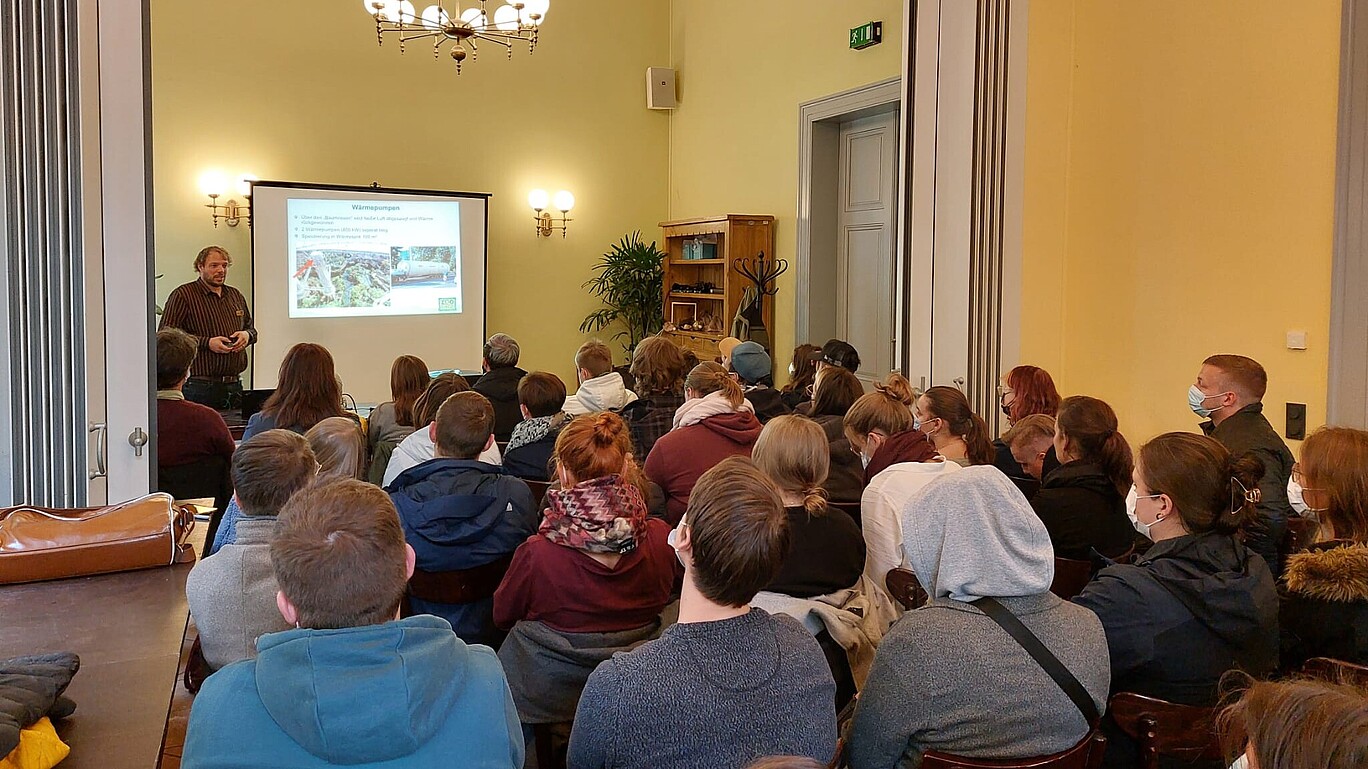What do Leipzig Zoo and BMW have in common?

After a long wait, the time had finally come: students on the bachelor's degree course in "Ecology and Environmental Protection" and the master's degree course in "IntegratedManagementSystems" set off on a student excursion to Leipzig. Once they arrived in Leipzig, the students were treated to an exciting presentation on the work of the environmental management officer at Leipzig Zoo. This ranges from species conservation through participation in more than 80 international breeding programs, to species conservation projects in other countries and the coordination of the zoo's environmental management system in accordance with the demanding European EMAS standard. The environmental management officer explained examples of energy and water savings, but also where there is still potential for improvement. One of the most important buildings in this context is Gondwanaland, where the smart materials used in the building construction ensure that no additional lighting is required, rainwater can be used and an intelligent ventilation system is used sparingly. An expert guided tour of the zoo, during which the practical implementation of environmental and sustainability management was demonstrated, rounded off this informative visit.
A tour of BMW was also on the agenda the next morning. The huge parking lot alone suggests that many employees work at the Leipzig site. What do you estimate? How many employees produce how many cars? The answer will be revealed a little later in the article, because first you will be taken on a short tour of the plant.
The entrance hall reveals the special architecture of the inclined plane building, which was awarded the German Architecture Prize in 2005. The central building with its open-plan offices is connected to the production halls by small bridges. There, the students were greeted by many machines and robots working at close intervals to produce or cut parts for the vehicles. In the next hall, car bodies are glued together, which are later filled with wiring harnesses and other equipment by the employees. Last but not least, the finished car is once again closely scrutinized in quality assurance.
Despite all the technology used in this plant, 5,500 people work at this site (for comparison, this is the population of the island of Borkum). They produce around 183 electric cars and over 1,000 conventional vehicles per day on an area of 229 hectares (equivalent to around 321 soccer pitches). In addition to the buildings, four wind turbines stand out on the site. These wind turbines provide the electricity for the production of the e-cars. In addition, old batteries from the electric cars store the energy peaks from the wind turbines so that they can be used at times when there is less wind. In the subsequent presentation, the officer, who is a former graduate of the HSZG, summarizes the company's environmental and occupational health and safety management system and gives examples of its practical implementation.
On the drive home, the participants reflect together on the two knowledge-packed excursion days and companies that both have an environmental management system and yet could not have been more different in terms of subject matter. This also shows the wide range of career paths open to our graduates.
